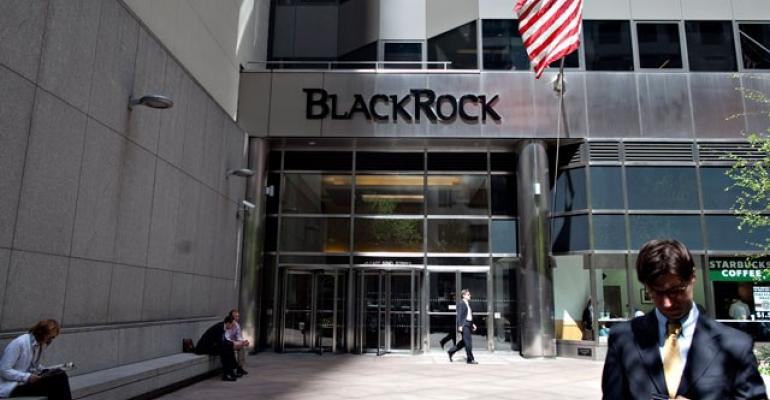By Sonali Basak
(Bloomberg) --Insurers got burned badly in the 2008 financial crisis. So almost a decade later, BlackRock Inc. scoured the industry’s $5 trillion in U.S. investments to figure out how they would fare if markets crash so hard again.
The answer: Worse.
The world’s largest money manager mined regulatory filings of more than 500 insurance companies and modeled their portfolios in a similar downturn. Their stockpiles -- underpinning obligations to policyholders across the nation -- would drop by 11 percent on average, according to its calculations. That’s significantly steeper, BlackRock estimates, than the group’s “mark-to-market” losses during the depths of the crisis.
The reason is pretty simple. Insurers needed to make up shortfalls after the crisis. But in a decade of low interest rates they had to venture beyond their traditional holdings of vanilla bonds. They now own vast amounts of stocks, high-yield debt and a variety of alternative assets -- a bucket that can include hard-to-sell stakes in private equity investments, hedge funds and real estate.

“There is more risk being put into these portfolios every year,” Zach Buchwald, the head of BlackRock’s financial-institutions group for North America, said in an interview. And such shifts may become permanent, especially because many of the allocations are hard to reverse, he said.
The new diversity should provide a huge benefit, according to Buchwald. After all, it was concentrations of investments in mortgage-backed securities and certain equities that proved the biggest pitfalls during the crisis, a study by the Organization for Economic Co-operation and Development found.
But even piles of investments that appear diverse can suffer big losses if care isn’t taken to ensure the assets won’t drop at the same time.
BlackRock examined the insurers’ holdings as it pitches a service called Aladdin. It’s trying to sell the companies analytics and advice, helping them test how complex portfolios may perform under various conditions, so they can design them to withstand catastrophe.
‘Stretched Market’
The assessment comes at an interesting time. With U.S. stocks trading near record highs and the Federal Reserve starting to unwind years of extreme measures, there’s a raging debate on Wall Street over whether a big correction is looming -- and if so, whether unforeseen faults in financial markets might crack open, as they did a decade ago.
“The strong ‘ quest for yield’ remains visible in non-banks,” Allianz SE Chief Economic Adviser Mohamed El-Erian said in a Bloomberg View column this month. The group, which typically includes insurers, has pushed into asset classes “including what most deem to be a stretched market for high-yield bonds.”
Some insurers have been vocal about their shifts. Athene Holding Ltd., an insurer that leans on Apollo Global Management to oversee investments, is wagering on complex, hard-to-sell debt. Its alternatives portfolio, representing about 5 percent of total holdings, posted a 12.3 percent return on an annualized basis in the second quarter.
It’s among a handful of insurers backed by private equity firms betting they can earn better returns than peers focusing on traditional investments. But even MetLife Inc. and Prudential Financial Inc., two of the oldest and largest life insurers in the U.S., have said they’re pushing into commercial property bets and private market debt in search for yield.
Shifting Holdings
BlackRock’s study showed that the industry’s forays into alternative investments haven’t always delivered yields on par with what the underlying money managers project. Insurers have to hold large amounts of capital against the investments they make -- money that isn’t free. When adjusting for those charges, private equity returns are generally less than 4 percent, whereas they would have been above 6 percent.
That, according to BlackRock, indicates insurers would probably earn more on investments in mezzanine real estate debt and high-risk equity investments in global real estate and other real-asset financing.
The view contrasts with a Goldman Sachs Group Inc. survey of more than 300 insurance executives this year, which found the respondents expected private equity to have the highest returns.
After experimentation with different assets, some insurers have shifted wagers. By the end of last year, the industry’s funds held in private equity had soared 56 percent to $56 billion from 2008. That trend is leveling off, Buchwald said.
Real estate investments, meanwhile, hit a seven-year high in 2015, then dropped by $7 billion the next year to $42 billion. Hedge fund holdings spiked to $24 billion in 2015, only to drop to $18 billion the next year. MetLife and American International Group Inc. were among those that began changing strategies.
The key is to find “other, more predictable income generators,” Buchwald said, "things like infrastructure and real estate.”
--With assistance from Sabrina Willmer and Katherine Chiglinsky.To contact the reporter on this story: Sonali Basak in New York at [email protected] To contact the editors responsible for this story: Dan Kraut at [email protected] David Scheer, Dan Reichl





